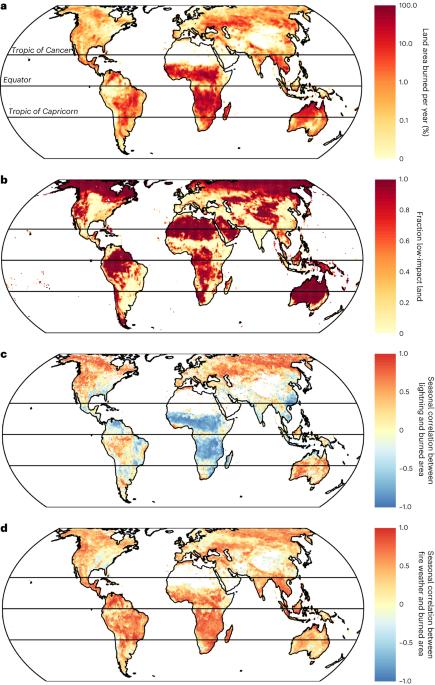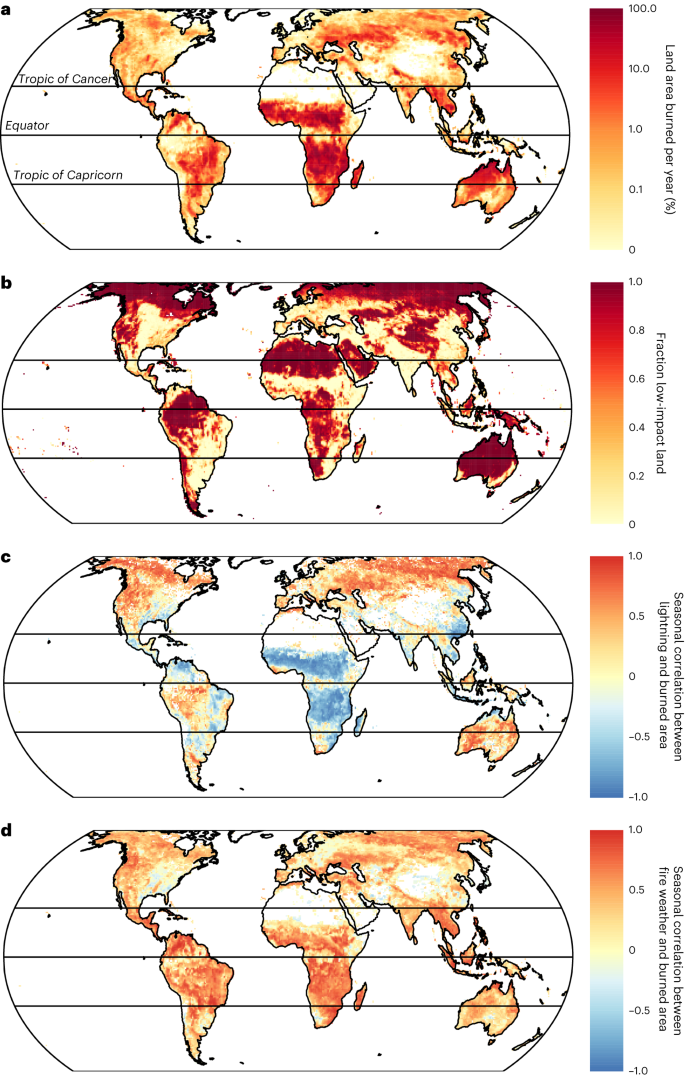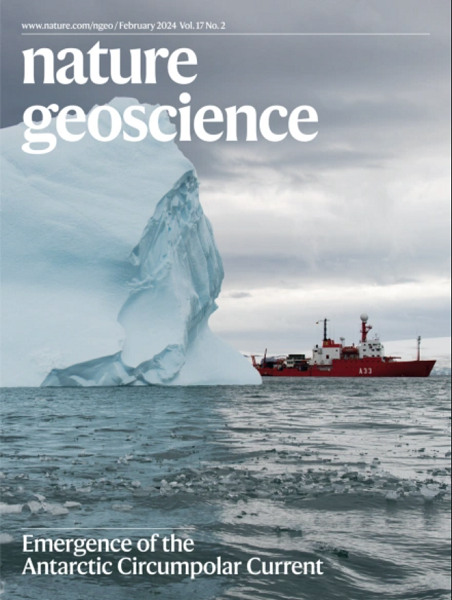Extratropical forests increasingly at risk due to lightning fires
IF 16.1
1区 地球科学
Q1 GEOSCIENCES, MULTIDISCIPLINARY
引用次数: 0
Abstract
Fires can be ignited by people or by natural causes, which are almost exclusively lightning strikes. Discriminating between lightning and anthropogenic fires is paramount when estimating impacts of changing socioeconomic and climatological conditions on fire activity. Here we use reference data of fire ignition locations, cause and burned area from seven world regions in a machine-learning approach to obtain a global attribution of lightning and anthropogenic ignitions as dominant fire ignition sources. We show that 77% (uncertainty expressed as one standard deviation = 8%) of the burned area in extratropical intact forests currently stems from lightning and that these areas will probably experience 11 to 31% more lightning per degree warming. Extratropical forests are of global importance for carbon storage. They currently experience high fire-related forest losses and have, per unit area, among the largest fire emissions on Earth. Future increases in lightning in intact forest may therefore compound the positive feedback loop between climate change and extratropical wildfires. Lightning-induced fires account for 77% of the burned area in extratropical intact forests, and lightning ignitions will probably become more frequent as the global climate warms, according to a global attribution of lightning and anthropogenic fires from 2001 to 2020.


由于闪电火灾,热带外森林面临的风险越来越大
火灾可以由人点燃,也可以由自然原因点燃,这几乎完全是雷击。在估计社会经济和气候条件变化对火灾活动的影响时,区分闪电和人为火灾至关重要。在这里,我们使用机器学习方法,使用来自世界七个地区的火灾点火位置、原因和燃烧面积的参考数据,获得闪电和人为点火作为主要火灾点火源的全球归因。我们发现77%(不确定度表示为一个标准偏差 = 8%)温带完整森林中被烧毁的面积目前源于闪电,这些地区每升温一度可能会多经历11%至31%的闪电。温带森林对碳储存具有全球重要性。它们目前经历了与火灾相关的高森林损失,单位面积的火灾排放量是地球上最大的。因此,未来完整森林中闪电的增加可能会加剧气候变化和温带野火之间的正反馈回路。
本文章由计算机程序翻译,如有差异,请以英文原文为准。
求助全文
约1分钟内获得全文
求助全文
来源期刊

Nature Geoscience
地学-地球科学综合
CiteScore
26.70
自引率
1.60%
发文量
187
审稿时长
3.3 months
期刊介绍:
Nature Geoscience is a monthly interdisciplinary journal that gathers top-tier research spanning Earth Sciences and related fields.
The journal covers all geoscience disciplines, including fieldwork, modeling, and theoretical studies.
Topics include atmospheric science, biogeochemistry, climate science, geobiology, geochemistry, geoinformatics, remote sensing, geology, geomagnetism, paleomagnetism, geomorphology, geophysics, glaciology, hydrology, limnology, mineralogy, oceanography, paleontology, paleoclimatology, paleoceanography, petrology, planetary science, seismology, space physics, tectonics, and volcanology.
Nature Geoscience upholds its commitment to publishing significant, high-quality Earth Sciences research through fair, rapid, and rigorous peer review, overseen by a team of full-time professional editors.
 求助内容:
求助内容: 应助结果提醒方式:
应助结果提醒方式:


